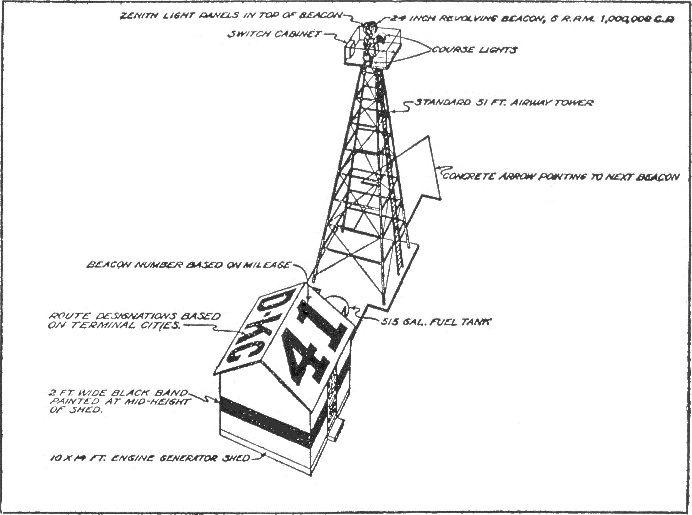|
Rotating Beacon
Rotating beacon may refer to: * Aerobeacon, a light assembly used to create a fixed or flashing signal visible over long distances * Aerodrome beacon, a beacon installed at an airport or aerodrome to indicate its location to aircraft pilots at night * Airway beacon, a rotating light assembly mounted atop a tower * Emergency vehicle lighting Emergency vehicle lighting, also known as simply emergency lighting or emergency lights, is a type of vehicle lighting used to visually announce a vehicle's presence to other road users. A sub-type of emergency vehicle equipment, emergency veh ..., one or more visual warning lights fitted to a vehicle * Lighthouse, a physical structure designed to emit light for navigational aid See also * Beacon (other) {{disambiguation ... [...More Info...] [...Related Items...] OR: [Wikipedia] [Google] [Baidu] |
Aerobeacon
An aerobeacon is a light assembly used to create a fixed or flashing signal visible over long distances. It consists of a high intensity electric lamp mounted with a focusing device in a cylindrical housing, which usually is rotated on a vertical axis by an electric motor. The sweep of the narrow beam thus produced gives the flashing effect. Aerobeacons were originally developed for aviation use, mostly as aerodrome beacons, but they also saw extensive use in lighthouses. They were far less expensive to manufacture and maintain than classic glass Fresnel lenses, and much more durable; they could be mounted and exposed to the weather. Historic models include the DCB-24, which used a single parabolic reflector; the DCB-224, a double-beamed version of the DCB-24; and the DCB-36, which used a system of plastic Fresnel type lenses. Manufacturers included Carlisle & Finch in Cincinnati and the Crouse-Hinds Company in Syracuse, New York. Aerobeacons have replaced fragile glass Fresnel le ... [...More Info...] [...Related Items...] OR: [Wikipedia] [Google] [Baidu] |
Aerodrome Beacon
An aerodrome beacon or rotating beacon or aeronautical beacon is a beacon installed at an airport or aerodrome to indicate its location to aircraft pilots at night. An aerodrome beacon is mounted on top of a towering structure, often a control tower, above other buildings of the airport. It produces flashes similar to that of a lighthouse. Airport and heliport beacons are designed in such a way to make them most effective from one to ten degrees above the horizon; however, they can be seen well above and below this peak spread. The beacon may be an omnidirectional flashing xenon strobe, or it may be an aerobeacon rotating at a constant speed which produces the visual effect of flashes at regular intervals. Flashes may be of one, two, or three alternating colors ( described below). In the United States In the United States, the Federal Aviation Administration (FAA) has established the following rules for airport beacons: Flashing rates # 24 to 30 per minute for beacons marki ... [...More Info...] [...Related Items...] OR: [Wikipedia] [Google] [Baidu] |
Airway Beacon
An airway beacon (US) or aerial lighthouse (UK and Europe) was a rotating light assembly mounted atop a tower. These were once used extensively in the United States for visual navigation by airplane pilots along a specified airway corridor. In Europe, they were used to guide aircraft with lighted beacons at night. UK and Europe United Kingdom A network of aerial lighthouses was established in the United Kingdom and Europe during the 1920s and 1930s. Use of the lighthouses has declined with the advent of radio navigation aids such as NDB (non-directional beacon), VOR (VHF omnidirectional ranging) and DME (distance measuring equipment). The last operational aerial lighthouse in the United Kingdom is on top of the cupola over the RAF College main hall at RAF Cranwell. Netherlands In the Netherlands, gas holders were painted with an arrow pointing north and two letters identifying their location. United States Approximately 1,500 airway beacons were constructed to guide ... [...More Info...] [...Related Items...] OR: [Wikipedia] [Google] [Baidu] |
Emergency Vehicle Lighting
Emergency vehicle lighting, also known as simply emergency lighting or emergency lights, is a type of vehicle lighting used to visually announce a vehicle's presence to other road users. A sub-type of emergency vehicle equipment, emergency vehicle lighting is generally used by emergency vehicles and other authorized vehicles in a variety of colors. Emergency vehicle lighting is often used to convey the urgency of the vehicle's journey, provide additional warning of a hazard, or, in the case of law enforcement, as a means of signaling another motorist that a traffic stop is being initiated. These lights may be dedicated emergency lights, such as a beacon or a lightbar, or modified stock lighting, such as a wig-wag or hideaway light, and are additional to any standard lighting on the car such as hazard lights. They are often used along with a siren system to increase their effectiveness and provide audible warnings alongside the visual warnings produced by the lights. In many ... [...More Info...] [...Related Items...] OR: [Wikipedia] [Google] [Baidu] |
Lighthouse
A lighthouse is a tower, building, or other type of physical structure designed to emit light from a system of lamps and lenses and to serve as a beacon for navigational aid, for maritime pilots at sea or on inland waterways. Lighthouses mark dangerous coastlines, hazardous shoals, reefs, rocks, and safe entries to harbors; they also assist in aerial navigation. Once widely used, the number of operational lighthouses has declined due to the expense of maintenance and has become uneconomical since the advent of much cheaper, more sophisticated and effective electronic navigational systems. History Ancient lighthouses Before the development of clearly defined ports, mariners were guided by fires built on hilltops. Since elevating the fire would improve the visibility, placing the fire on a platform became a practice that led to the development of the lighthouse. In antiquity, the lighthouse functioned more as an entrance marker to ports than as a warning signal for reefs a ... [...More Info...] [...Related Items...] OR: [Wikipedia] [Google] [Baidu] |



